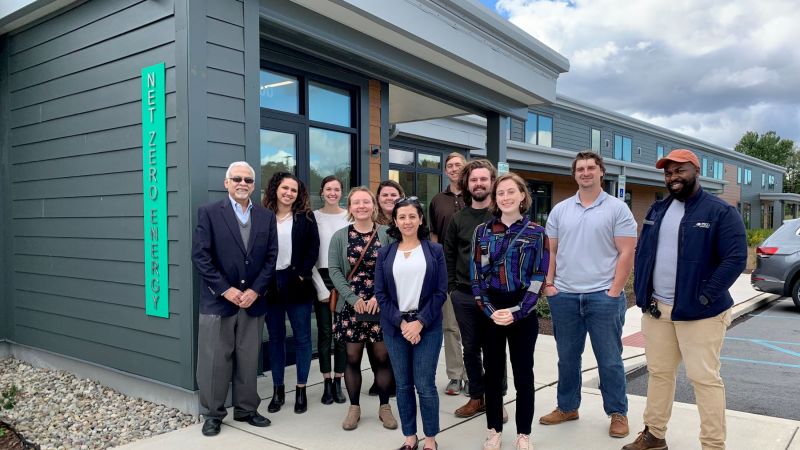In October, graduate students in Lehigh’s Energy Systems Engineering program toured Sustainable Energy Fund’s Net Zero Building, in Schnecksville, Pennsylvania, to observe energy-efficient building practices in the real world.
The 15,000-square-foot facility, which currently serves as the nonprofit organization’s headquarters, was constructed to demonstrate to Lehigh Valley contractors and corporations that a “net zero” building—one that generates as much energy as it uses over the course of a year—can be built at the market rate.
The building is equipped a multitude of features, from strategically insulated walls and floors to sensor-guided lighting and HVAC systems to a sophisticated rooftop solar panel array—that maximize energy efficiency of the space, while also ensuring the comfort and satisfaction of its occupants.

According to John Costlow, president and CEO of Sustainable Energy Fund (SEF), the building’s estimated energy use intensity (EUI) is approximately 21 kBtu per square foot, achieving an Energy Star Rating of 97 and performing better than 97% of similar buildings nationwide.
The students learned about the unique RFP process the organization used for the project: SEF first set a maximum budget and then searched for an architect and developer willing to meet the challenge. In selecting features to include in the building, SEF used an economic approach, only targeting energy efficiency measures with a “per kWh saved” cost less than or equal to that of the “per kWh generated” cost of the solar system.
Contractors can replicate the commercially viable approach and techniques used to construct the building to make a profit. Overall, Costlow said, construction of the building cost around $5.5 million, which is approximately $1 million in excess of the cost to construct a similar building just to code. The expected return on investment for the building is nine to 15 years.
Costlow emphasized to the students that similar buildings are often built as “vanity projects” and supported by donor funding. SEF’s effort to construct a commercially viable net-zero energy building, he said, serves an important model and example for other companies.
—Laura Marsiglio ’21 is a master’s student in Lehigh’s Energy Systems Engineering program
